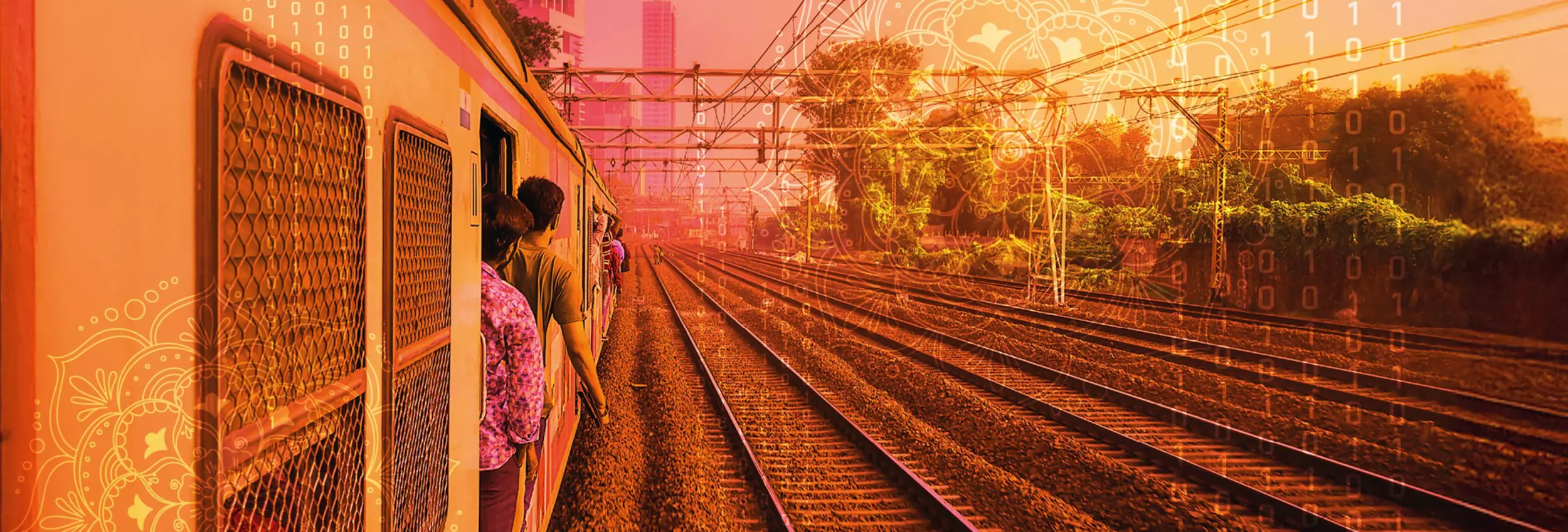Focus on transition


Sethubalaji Karthikeyan
Position: Director, Transportation
- Company: HARTING India Pvt Ltd
The Indian Railways has embarked on an ambitious journey to reduce its carbon footprint and become a Net Zero Carbon Emitter by 2030. A key aspect of this initiative is improving energy efficiency through advanced technologies such as regenerative braking systems, smart trains equipped with real-time monitoring and the integration of artificial intelligence for predictive maintenance. As the railway industry transitions towards fully electric and digital ecosystems, data has emerged as the lifeline that ensures safety, efficiency and reliability across all facets of rolling stock.
The Engineering Backbone: From Power to Intelligence
In traditional railway systems, power systems dominated the design of rolling stock. However, with the advent of embedded electronics, sensors, automation controls and predictive diagnostics, the focus has shifted towards robust and modular data infrastructure. Modern electric trains now run on:
Control Data: For traction control, braking systems and train automation
Operational Data: Monitoring onboard systems like HVAC, doors, and batteries
Passenger Information Systems: Real-time updates, surveillance and infotainment
Predictive Maintenance Data: Vibration, temperature and wear sensors that reduce downtime
The IoT-based smart railway market is projected to increase its market value from $15.85 billion in 2020 to $36.58 billion in 2026, with a compound annual growth rate of 15.14%
Future Directions
As the railway industry continues to evolve, it is essential to:
Invest in Advanced Technologies: Leverage IoT, AI, and data analytics to improve operational efficiency and passenger experience.
Standardize Data Formats and Interfaces: Adopt international standards to ensure seamless communication and efficient data integration.
Enhance Cybersecurity: Implement robust cybersecurity measures to protect against data breaches and cyber threats
Challenges in Data Collection, Processing, and Usage
Despite the benefits of data-driven decision-making - the railway sector faces several challenges:
Physical Layer: Harsh rail environments pose engineering demands for transmitting critical data, including shock, vibration, EMC/EMI protection, temperature extremes, ingress protection and space constraints.
Data Collection: Legacy systems, lack of standardization, sparse sensor deployment, and environmental constraints hinder effective data collection.
Data Processing: High volume and velocity of data, low data quality, cybersecurity threats, and latency issues complicate data processing.
Data Usage: Fragmented data silos, lack of skilled workforce, regulatory and privacy issues, and ROI justification limit the effective use of data.
Data Collection, Processing, and Usage in Indian Railways
Indian Railways collects data through:
1. Sensors and IoT Systems: Advanced IoT sensors and digital ticketing systems capture real-time data on track and rolling stock diagnostics.
2. Passenger and Ticketing Data: Digital platforms like UTS and IRCTC collect ticket sales, cancellations and travel patterns.
Data processing involves:
1. Big Data and CRIS AI Platforms: Enterprise-wide analytics platforms integrate siloed data and support decision-making.
2. Predictive Maintenance: AI/ML systems identify faults and reduce failures and manual inspections.
3. Security and Operations Management: Facial recognition, GPS-enabled seals, and mobile apps process security and legal data.
Importance of Standardised Data Formats and Interfaces
Standardized data formats and interfaces are crucial for:
Seamless Communication: Enabling different systems and technologies to communicate effectively.
Efficiency and Cost Reduction: Reducing time and resources needed for data integration and minimizing errors.
Enhanced Safety: Ensuring safety-critical information is consistently handled and transmitted across systems.
Interface Technologies used in Indian Railways
Indian Railways uses a combination of:
Ethernet: For data communication, onboard systems and control systems.
Legacy Communication Technologies: Serial protocols like RS-232 and RS-485 are still prevalent in older systems.
Wireless Communication Systems: GSM-R and Wi-Fi networks enhance connectivity and passenger experience.
Cabling and Connector Standards
Indian Railways adopts international standards for connectors and cabling, including:
Ethernet Connectors: RJ-45/ M12 connectors for twisted pair cables.
Fiber Optic Standards: Standard connectors like SC, LC, or ST for fiber optic installations.
Cabling Types: Both copper and optical fiber are used, depending on the application.
Conclusion
As Indian Railways transitions towards an all-electric and digital ecosystem, data has become the lifeline that ensures safety, efficiency, and reliability. By adopting advanced technologies and standardized data formats and interfaces, Indian Railways can improve operational efficiency, enhance passenger experience and reduce its carbon footprint. HARTING's modular interface solutions for MegaBit/ GigaBit up to Cat. 7, such as Han-Modular and for Single pair Ethernet (SPE) the T1 Industrial Ethernet connectors can play a crucial role in enabling scalable and reliable data transmission in rolling stock systems.



